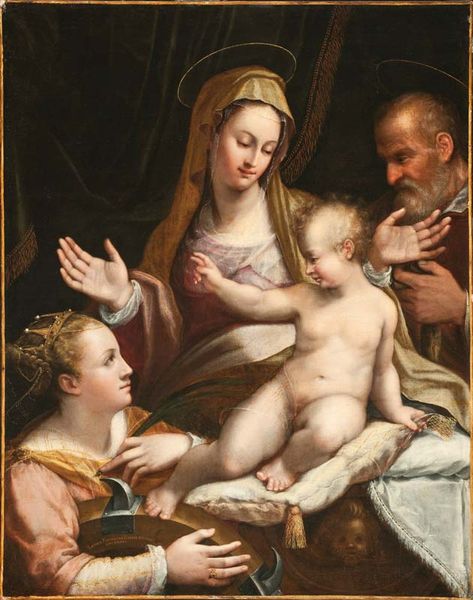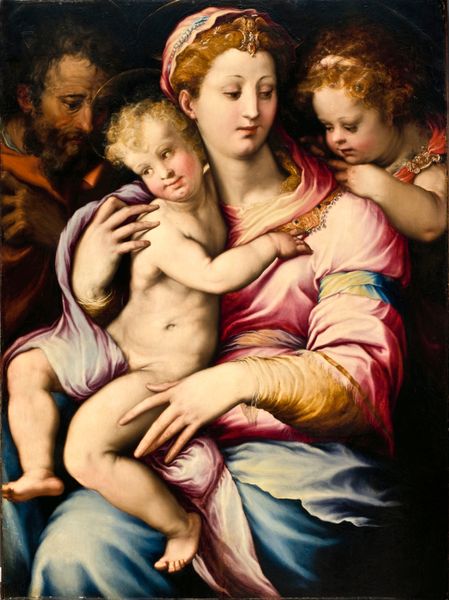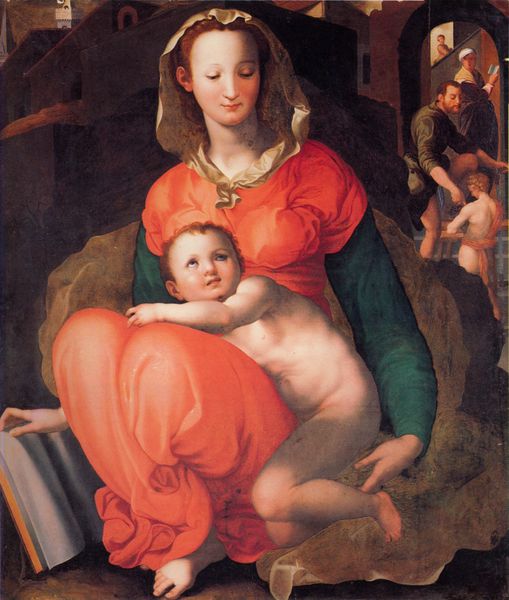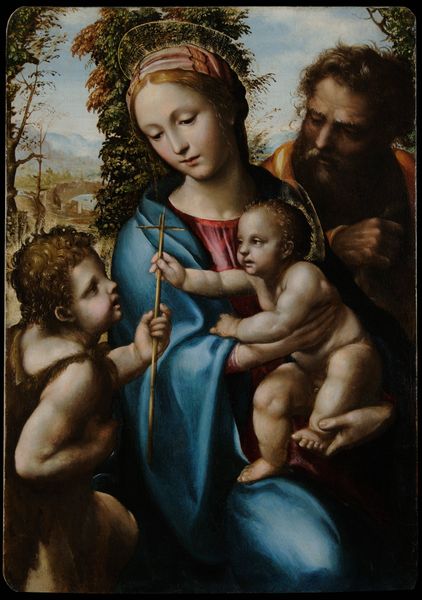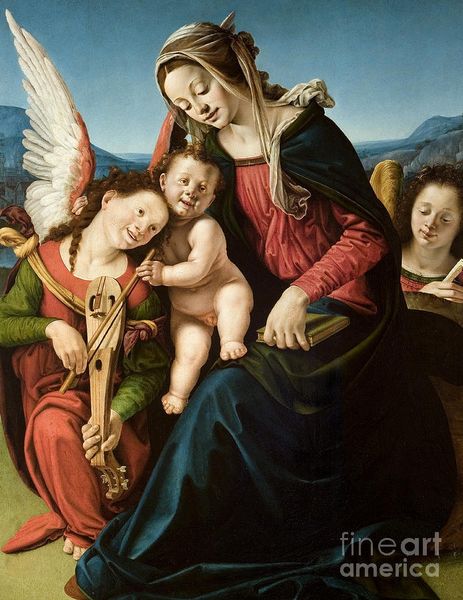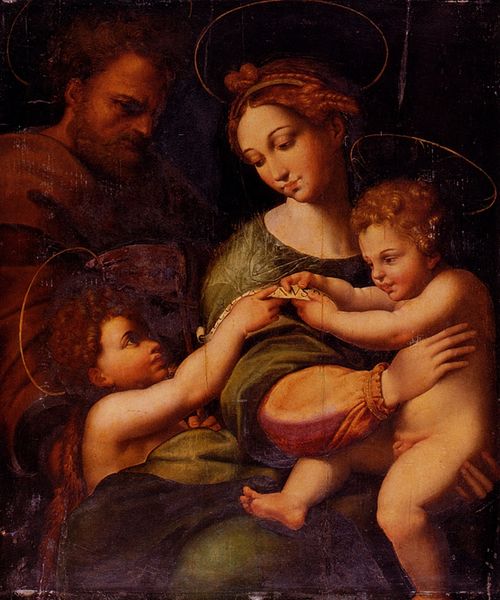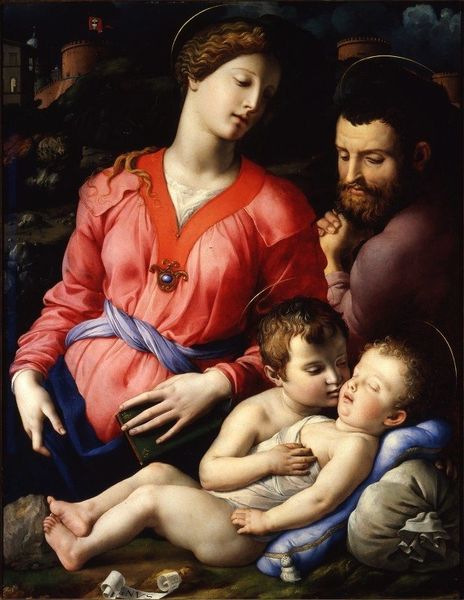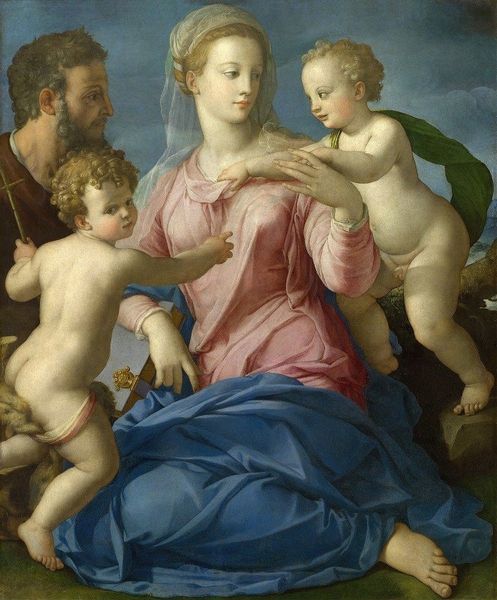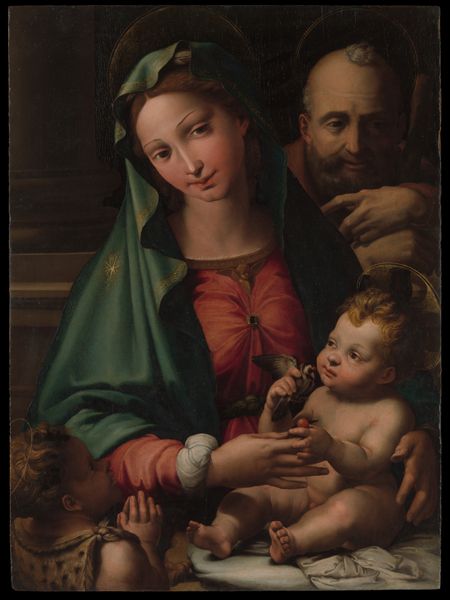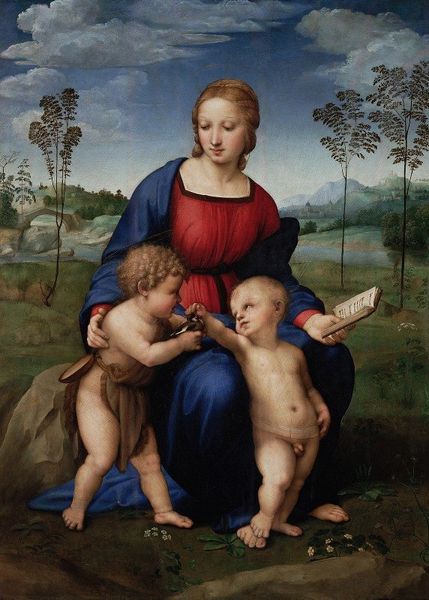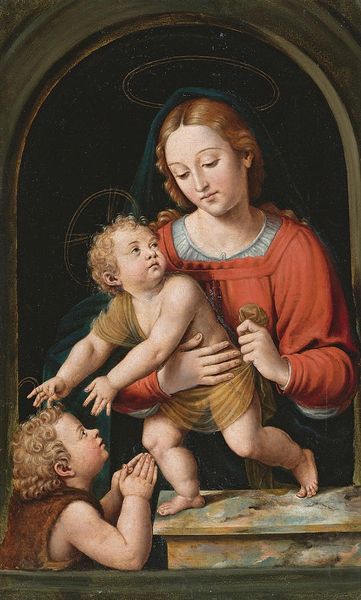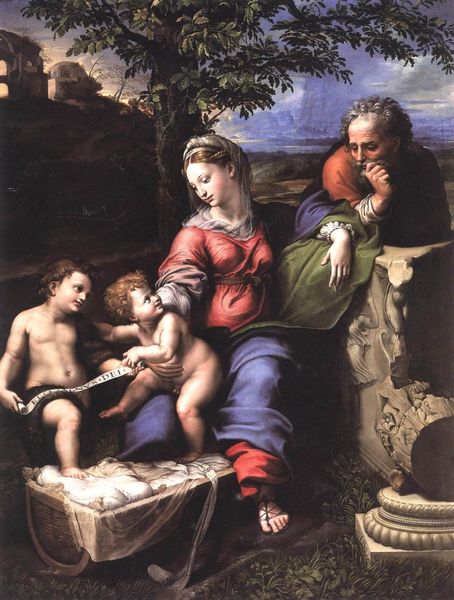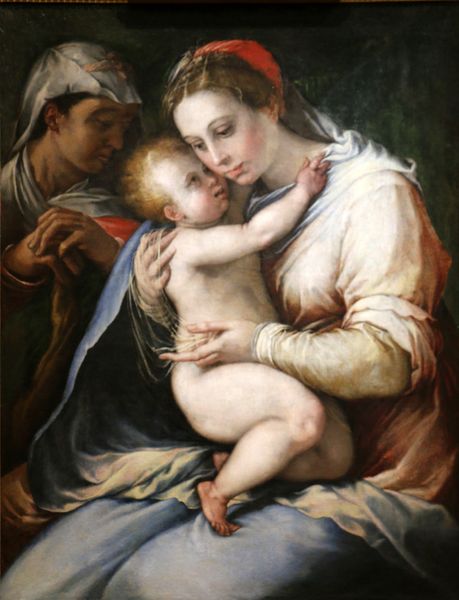
painting, oil-paint
#
portrait
#
high-renaissance
#
painting
#
oil-paint
#
figuration
#
history-painting
#
italian-renaissance
Copyright: Public Domain: Artvee
Curator: This oil painting is titled "La Madone De Lorette" by Raphael, showcasing an interesting composition and subtle handling of color. What strikes you first about this painting? Editor: That sheer fabric that Mary's holding! It's like spun moonlight. I immediately wonder what it’s for… A swaddle? A veil? A metaphor for the fragile nature of new life itself? Curator: Perhaps all of those! If we think about materials, oil paint itself allowed for a smoother blend of pigments than tempera, look how the diaphanous fabric almost dissolves into the background and consider the layers of labour required. Also observe Saint Joseph, almost hidden behind the figures. What is his function here, besides an element for social acceptance? Editor: Right. It's heavy, in a way, isn't it? A deep kind of… anticipation hangs in the air. Almost dread? The muted tones amplify that feeling of quiet solemnity. It's that subtle interplay of shadow and light; a bit unnerving as if tragedy could suddenly fall over. And, if we zoom out, he seems resigned to his role and overshadowed even in proximity. Curator: Precisely. Italian Renaissance paintings like this one often served not just aesthetic purposes, but also to reinforce religious doctrines and patriarchal values. What is especially innovative here is the tender realism that softens and humanises the Virgin’s portrayal; it adds complexity to any immediate assumptions about rigid religious messages. Editor: Definitely. There's a vulnerable grace, you know? Almost melancholic. She's both divine and completely human in this moment, protecting a precious gift she knows she'll ultimately have to surrender. And the baby! All reaching for what cannot be reached – light and then the darkness in his coming fate. It hits differently when you stop and feel its weight, almost overwhelming in its understatement. Curator: Thank you. Indeed, acknowledging that tension between human reality and symbolic representation is key to appreciating the High Renaissance. Considering also, Raphael’s studio, it gives food for thought when reflecting about workshops and delegated labour that often existed behind masterpieces. Editor: Agreed. Looking closer and reflecting further makes the themes all the more potent. The artist succeeds here in making this Holy family into someone ordinary yet unrepeatable like your own, your own existence in the grand tapestry of life.
Comments
No comments
Be the first to comment and join the conversation on the ultimate creative platform.
